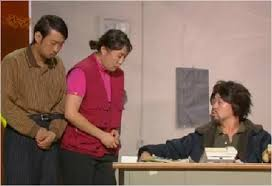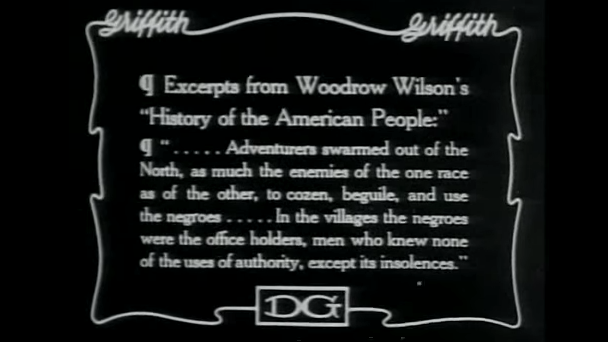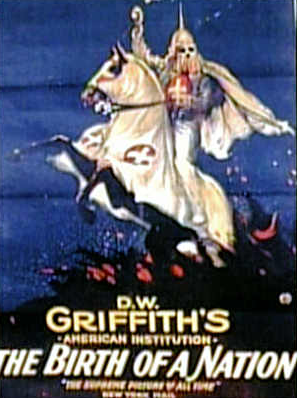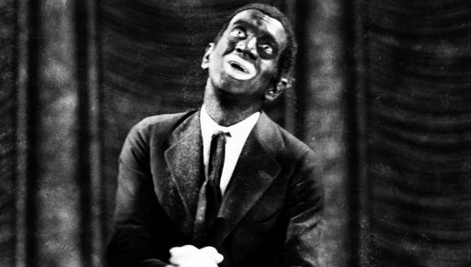On Discriminatory Expressions toward Migrants and Foreigners
Especially in television media, there exists a prevalent tendency to label the diasporic migrant and foreigner population as the outcast, the unwanted, and the “other.” In an attempt to dissolve such ignorant methods of considering the migrant community, the lawyers of APIL are currently in the process of coordinating a project challenging major broadcasting companies such as SBS, KBS2, MBN, EBS, MBC, JTBC, and Channel A due to the companies’ discriminatory expressions toward and misrepresentation of migrants and foreigners. During the translation of some of the Attachment files and Exhibits produced by the Human Rights Commission of Korea to be included in the project, there were many despicable examples that compels one to truly consider the profound extent to which racial and ethnic discrimination propagates in today’s media.
One example the paper cites manifests itself in “Gag Concert,” a skit-based comedy program broadcasted by KBS2 (Korean Broadcasting System). In the skit “Yellow Sea,” the main two actors portray themselves as Chinese migrants living in Korea that make a living by voice phishing, the criminal act of pretending to be a credible or trustworthy source in order to gain personal and private information to ultimately extract financial reward from the victims. The main purpose of the skit is to encourage laughter from the audience whenever the actors exaggerate the stereotype of the “naive and awkward Korean-Chinese,” including instances in which the actors repeatedly use a heavy accent that is intended to mimic the Korean-Chinese. As shown in Image 1, the Korean-Chinese are dressed intentionally in ragged clothes to emphasize their social and cultural awkwardness compared to the regular South Korean.

Image 1. “Yellow Sea” skit, Gag Concert, television show, KBS (South Korea)
Another instance the paper criticizes is depicted in the show “Multicultural Family – Human Documentary” broadcasted by EBS. The show directly broadcasts a scene in which a Korean woman and her migrant husband are told by older residents that one must eat dog meat in order to become a “true Korean,” exposing the unwarranted notion that preference toward certain foods that are labelled as “Korean” can determine one’s commitment and love toward Korea as a whole. As depicted in Image 2, the Korean woman exposes the reality of South Korea regarding cultural assimilation and how migrants must make a constant and intentional effort to “fit into” Korean society. The show overly emphasizes the need to consume a specific Korean food in order to truly assimilate into Korean society to the extent to which, under this logic, one’s inability to eat kimchi makes them “less Korean.” This made me wonder if there is a “perfectly Korean” person out there and whether this logic of attributing physical and mental characteristics and beliefs to specific ethnicities made any sense.
 Image 2. Multicultural Family – Human Documentary, television series, July 26, 2013 (South Korea)
Image 2. Multicultural Family – Human Documentary, television series, July 26, 2013 (South Korea)
After a few moments of consideration, it does not take long for one to realize that this argument is clearly erroneous and lacks a logically coherent premise. Under this premise, one’s physical attributes and racial connections should be the primary factors in determining one’s belonging to a certain country. This notion not only is highly offensive in that it fosters some of the most illogical, unreasonable, and baseless discriminations that have resisted change in contemporary society but also extremely insulting as it supports the “logic” behind atrocious global phenomena such as the Holocaust, anti-Semitism, and South African apartheid.
What is most disturbing about this phenomenon is that anyone can, in ignorance, make the same aforementioned comments without giving their words a second thought. The fact that one can not actively recognize some of the insults and discriminatory phrases in the media as being offensive or disrespectful is a growing concern in not only South Korea but also in many other countries.
Growing up, I always enjoyed television shows but after a certain point of realization that the material became too graphic or violent for me, I stopped watching them. In the process of translating the discriminatory expressions in the South Korean media, I was reminded of some of the shows that I used to and, to be completely honest, still enjoy today.
One of such shows is Family Guy, an American adult animated sitcom that narrates the daily lives of the Griffin family and its friends. The show emphasizes the use of somewhat crude and uncensored gags and jokes that make reference to contemporary events, icons, and phenomena. As a sitcom targeting adult audiences, Family Guy relies on exaggerated emphasis on highly controversial issues, including racism and ethnic discrimination. One of the minor characters in the show is Tricia Takanawa, a Japanese news reporter for Quahog 5 News, the local news channel of the Griffins. As depicted in Image 3 below, Takanawa has exaggerated slanted eyes and jet black hair with bangs. Whenever she reports on the news, she is referred to as “Asian Correspondent, Tricia Takanawa.” The fact that her racial identity and the label “Asian” must always be attached to her name makes it obvious that she is “outside the norm,” someone who is not a “true American” due to her ethnic roots.
 Image 3. Family Guy, television show, Fox Broadcasting Company (United States)
Image 3. Family Guy, television show, Fox Broadcasting Company (United States)
Another example of racism toward Asians and Asian-Americans in Family Guy is depicted in a particular scene in an episode released last season. As portrayed in Image 4 below, an Asian-American child with the “conventional” slanted eyes and jet black hair with bangs (an obvious resemblance to Tricia Takanawa) is referred to a human calculator during a physics exam. Peter dehumanizes and commodifies the Asian child as a calculator and commands him to “do math,” fostering the discriminatory notion that Asians are “good at math.”
 Image 4. Family Guy, television show, Fox Broadcasting Company (United States)
Image 4. Family Guy, television show, Fox Broadcasting Company (United States)
Although the producers of Family Guy claim that their humor is intended as “satire” (the usage of irony, sarcasm, or ridicule to expose, denounce, or scorn human folly and vice), it is clear that the show takes such jokes too far. The producers argue that by exposing these discriminatory expressions, they are forcing Americans to acknowledge the existence of and consequently eradicate the blatant racism still prevalent in the nation today. However, by broadcasting these offensive and provocative instances of “humor,” the show is, in fact, fueling some of the most unjust discriminations in the media and mitigating critical issues that should be seriously considered by the show’s audience, rather than being casually brushed off as “humor.” If anything, it would not be unreasonable to claim that the show somewhat advocates for such discriminatory expressions to continue to proliferate through its provocative stance toward racism.
Another significant source of cultural discrimination through pop culture is depicted through the medium of films. For example, in Griffith’s “Birth of a Nation,” many scenes illustrate the usage of propaganda to portray contemporary social atmosphere and norms. In multiple scenes of the film, black soldiers are portrayed as an evil force that overtake the entire city as their own and wreak havoc to a powerless white population. In another scene, black administrators are depicted as ruthless and immoral beings that pass ridiculous laws such as requiring white people to pay their respect by saluting to black military officers. As portrayed in Image 5 below, the film director uses an excerpt by Woodrow Wilson to support his case: “in the villages the negroes were the office holders, men who knew none of the uses of authority, except its insolences.” Griffith intentionally uses this select passage to claim that immoral black leaders manipulated the innocent white population by using their authority as a way to legitimize their disrespectful behavior. In this respect, “Birth of a Nation” has an immoral motive to portray black soldiers as violent and merciless individuals, quite opposite from some of the realities of pre-Civil War history.
 Image 5. The Birth of a Nation (1915), film, D.W. Griffith (United States)
Image 5. The Birth of a Nation (1915), film, D.W. Griffith (United States)
Considering such blatant racism depicted within the film, it would not be unreasonable to label “Birth of a Nation” as a propaganda film that reveals the controversial social tensions at the time: to reject black populations and to empower the Ku Klux Klan by portraying its members as courageous and moral heroes. As depicted in Image 6, the Ku Klux Klan is dramatized as a national “hero in white” despite its notorious reputation within American history for using ruthless violence and terrorism against blacks such as the burning of houses with black residents still inside them, kidnapping and lynching, inhumane torture, as well as many other forms of assault and murder.
 Image 6. The Birth of a Nation (1915), film, D.W. Griffith (United States)
Image 6. The Birth of a Nation (1915), film, D.W. Griffith (United States)
Furthermore, another form of discrimination toward the “foreign” prevalent in The Birth of a Nation is made through a method of theatrical makeup called “blackface.” As depicted in Image 7 below, “blackface” is the practice of actors, usually white, using makeup to paint their faces black and portray “black characteristics” such as thick lips, dark skin, and certain facial features.
 Image 7. “Blackface” Theatrical Make-up. 19th century (United States)
Image 7. “Blackface” Theatrical Make-up. 19th century (United States)
Despite the relatively longer duration of the film, the innumerable accounts of blatant racism depicted within the film kept me attentive throughout the entire movie, some parts out of anger and some from pure shock. The fact that most of the film depicted completely incorrect interpretations of American history disturbed me to a great extent and worried me since some people watching the movie today could even believe the evident lies the movie was advocating with its content material and wrongfully interpret our nation’s past. After reading a 2002 article in the Los Angeles Times regarding the revival of the Ku Klux Klan and its founding principles through the release of this film, I was even more appalled at the fact that the Ku Klux Klan was actively recruiting new members by using this film as a form of propaganda to continue its acts of hate.
Considering the detrimental aftermath of the film, I do agree with the United States Library of Congress that the film is “culturally significant” in that it is important to record and remember those films that have wrongfully depicted national history and left devastating consequences in American culture in order to rightfully inform and educate the public about the actual and truthful accounts of our historical events. However, by acting as a medium of propaganda for the Ku Klux Klan from the 1920s to even contemporary cults advocating for “racial cleansing,” the film forced the black population of America into a much disadvantageous position that was not constructive in any way. This is not to say that I do not recognize the cultural value of the film that portrays the incorrect interpretation of the pre-Civil War atmosphere of America at the time, but to say that the overall impact of the film has endangered the mentality of the developing generation to continue to believe those wrongful ideologies depicted within these films.
After considering these profound instances of discriminatory expressions toward migrant and foreign populations in both the South Korean and American television media, I was reminded of the ideas of multiculturality and transculturality, previously analyzed during a college seminar course last summer.
Within this context, ‘multiculturality,’ by definition, holds the premise that there exist distinguishable cultures that must tolerate each other, thus allowing a separation of the “us” and the “other” within a realm in which the minority “other” must assimilate or adapt themselves to fit in the dominant “us” culture. Multiculturality assumes the heterogeneity of cultures and accepts the premise that cultures are different in nature and can thereby be strictly categorized. According to Rajeev Balasubramanyam, “multiculturalism does not refer to the ideology of liberalism or cultural acceptance. It is, instead, a technology of social control, racism, and the maintenance of the caste hierarchy, an instrument of delusion, oppression, and censorship in contemporary society.”
On the other hand, ‘transculturality’ assumes that cultures blend together and cannot fully distinguish one from the other, thereby creating a “new thing” in the process of cultural integration. Under this premise, the show Family Guy could not exist as the show operates under the notion of multiculturality, or the idea that all cultures can be separated and categorized into specific ethnic labels.
Comparing the two ideas, it is obvious that transculturality is much more flexible than multiculturality regarding cultural acceptance and integration. Multiculturality does not allow for any significant changes within contemporary society while transculturality opens up many doors and opportunities for peoples of different ethnicities to understand each other to the extent of creating a new culture through their continual interactions.
At this point, it is pivotal to recognize the fact that in South Korea, the term “multiculturalism” possesses much more positive connotations as it is often polarized with the idea of “assimilation.” In this regard, assimilation refers to the idea that certain degrees of superiority and inferiority exist between cultures and the marginalized and weaker party must make the primary effort to “fit in” Korean society. On the other hand, the term “multiculturalism” is a relatively better choice as it incorporates a sort of parallelism in which various cultures coexist without interrupting each other, moving forward on non-intersecting parallel lines. “Multiculturalism,” then, could also mean that cultural diversity is at the very least respected within this framework as one party is not overly marginalized and forced to subjugate under another.
Considering this contrasting connotation,” it is important to note that while the South Korean press and media seem to promote this idea of “multiculturalism” and peaceful coexistence of diverse cultures, this is only in rhetoric and lacks practicality on a realistic level. South Korea still relies heavily on the premise of the “us” and “them” framework in terms of cultural assimilation and thus is far from reaching the relatively ideal status of transculturalism.
In this respect, one of the most urgent agendas that must be implemented and promoted on a larger scale in both South Korea as well as many other countries is the personalization of the migrant experience. There must be a collective understanding that the migrant experience is much more multifaceted than what is seems through the filtering and intentional censorship of popular media and broadcasting companies. The media and broadcasting companies intentionally make their contents provocative and controversial in order to attract more audience members, which only aggravates the already blatant forms of racial and ethnic discrimination. In order to make progress in reducing discrimination toward migrant as well as foreign populations, there must be an internal change starting within pop culture itself from multiculturality to transculturality, a truly mutual involvement of members from each country involved through collective integration, not forced assimilation of one side to the other. This is perhaps one method to finally break the insidious cycle of ignorance regarding racial and ethnic discrimination that is so prevalent in pop culture and various forms of media today.
Attached:
 ENGLISH_Translated_MigrantForeignerDiscrimination
ENGLISH_Translated_MigrantForeignerDiscrimination
 KOREAN_MigrantForeignerDiscrimination
KOREAN_MigrantForeignerDiscrimination
(APIL Intern – Summer 2014, Della Jung)
(7.5기 인턴, Della Jung)
관련 글
- 2014년 7월 24일
- 2014년 8월 4일